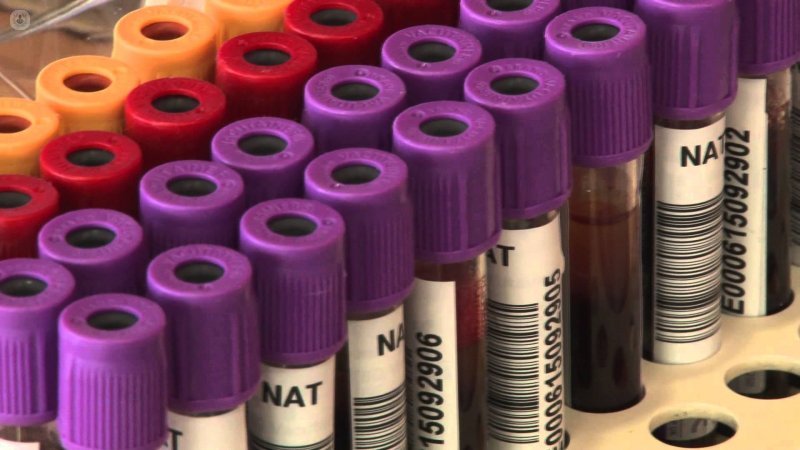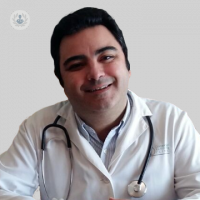Complications and success rate in bone marrow transplantation
Written by:Transplantation of hematopoietic precursors or marrow transplantation is not without some risks or complications for the Visually Impaired or hematologic diseases, but there are hardly any risks for the donor. Advances in Haematology have made complications for receiver are minimized and the success rate is greater. Hence Hematology experts encourage people to donate bone marrow, as it is the source of life for many patients.

Complications of bone marrow transplantation
Transplants of hematopoietic precursors is not without side effects. The main order of frequency, are:
- InfectionBone marrow transplantation usually requires that the core of the beneficiary itself is destroyed ( "myeloablative"). Before the "graft" patients can go several weeks without sufficient white blood cells to help fight infections. This places the patient at increased risk of infection, despite antibiotics.Employees in allogeneic transplantation immunosuppressive agents for the prevention or treatment of disease GVHD further increases the risk of opportunistic infection. Immunosuppressive drugs are administered for at least 6 months after transplantation, or longer, if necessary to treat graft versus host disease. Transplant patients lose their acquired immunity. For this reason, transplant patients must be re-vaccinated once they have completed the pattern of immunosuppressive treatment.
- hemorrhageThe bone marrow produces platelets, which are cellular fragments that stick in regions where there are wounds of blood vessels, to limit blood loss. The destruction of the cells producing platelets causes severe hemorrhage more likely. Therefore, many patients require platelet transfusions during the immediate post-transplant days.
- Veno-Occlusive DiseaseSevere liver injury can result from veno-occlusive disease (VOD). Elevated levels of bilirubin, increase in size of the liver or spleen and fluid retention are clinical features of this disease. It is typical of allogeneic transplants. a generalized cellular injury and obstruction of the hepatic venous sinuses should be. Severe cases are associated with a high mortality rate. Anticoagulant treatment may be effective in reducing the severity of VOD but may also increase bleeding complications. It has been shown that there is a drug that helps prevent VOD, facilitating the flow of bile.
- MucositisLesions of the lining of the mouth or mucositis is a common complication of hematopoietic stem cell transplants. Usually not deadly, but painful, and not allowed to eat or drink. Mucositis is treated with pain medications plus intravenous infusions of fluids to prevent dehydration and malnutrition. It is also treated with laser therapy, which relieves pain and allows the patient to eat food. Sometimes the cold, the vasoconstrictor effect it prevents the appearance of mucositis, so patients are advised to eat ice cream.
- Graft-versus-host diseaseThe graft versus host disease (GVHD) is an inflammatory process characteristic of allogeneic transplantation. It is an attack of the "new" immune cells from bone marrow against the recipient's tissues. This can happen even if the donor and recipient are HLA-identical because the immune system can still recognize other differences between their tissues. High doses of cortico-steroids, such as prednisone, are the standard treatment. However, this immunosuppressive treatment often leads to fatal infections. Disease chronic graft versus host may also develop after allogeneic transplant. It is the main source of late treatment-related complications, although not usually fatal. Besides inflammation, may lead to the development of fibrosis, scleroderma-like, as it can cause functional disability and requires prolonged immunosuppressive treatment. The GVHD usually mediated by T lymphocyte type cells, that react with foreign peptides or antigens from different tissues of the recipient.
Graft-versus - tumor
The graft-versus-tumor (GVT) or "graft versus leukemia" is the beneficial aspect of the phenomenon graft versus host. For example, patients with acute graft versus host disease or chronic host particular after allogeneic transplant tend to have a lower risk of cancer recurrence. This is because a therapeutic immune reaction d T donor lymphocytes against the diseased bone marrow of the recipient.The GVT is the major benefit of transplants which do not employ the highest immunosuppressive regimens. The graft vs. tumor is primarily beneficial in diseases that progress slowly, such as chronic leukemia, low grade lymphoma and, in some cases, multiple myeloma. However, it is less effective in acute leukemias, given its rapid expansion and cell growth capacity. If no cancer relapse after a first transplant, a new implant can be performed with the infusion the patient with a greater amount of white blood cells (lymphocytes T) of blood from donors.
Forecast bone marrow transplant
The prognosis varies widely depending on the type of disease, the stadium, the source of stem cells, HLA compatibility and conditioning regimen. Transplantation offers a chance of cure or long-term remission if it can survive the inherent graft versus host disease, immunosuppressive therapy and the spectrum of infections complications. In recent years, survival rates have gradually improved. Mortality allogeneic estimated around 35-40%, lower for those with milder transplants ablative regimens, also called mini-allotransplants (around 15%). Mortality for autologous transplants is low, around 5% thereof.
Risks for the donor hematopoietic progenitors
The risks to the donor are minimal, and you have to keep in mind that is the only transplant would allow the same donor to donate several times, as parents or donated bone regenerate in 10-15 days. Yes it may appear mild pain or bruising at the puncture site and sometimes low-grade fever that perfectly antipyretics when the granulocyte colony stimulating factor or a cytostatic is administered, to move to peripheral blood hematopoietic progenitors.That's why experts in hematology encourage all people to donate bone marrow or hematopoietic progenitors, as it is the source of life for many patients.
Edited by Patricia Crespo Pujante


